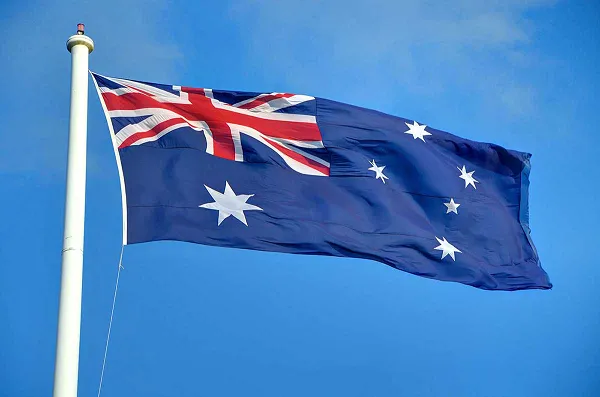# Australia Pushes Forward with Teen Social Media Ban

Regardless of widespread criticism of the proposed invoice, and lots of questions as as to if it should really ship the supposed profit, the Australian Authorities is pushing forward with its proposed restrictions on social media utilization, which is able to see customers aged beneath 16 banned from social apps.
Yesterday marked the subsequent stage of the proposal, with the Authorities formally introducing the “On-line Security Modification” invoice in Parliament. The following stage, then, is for Parliament to formally vote on the invoice, which is prone to occur subsequent week.
And the Authorities appears very eager to enact it, regardless of a broad vary of consultants voicing considerations in regards to the impacts that it’ll have, and the sensible realities of its enforcement.
However once more, the Authorities is eager to take motion, on behalf of fogeys all over the place, although because it stands, I’m unsure that this proposal goes to work because the Authorities expects.
First off, there might be challenges in enforcement.
As per the invoice:
“The On-line Security Modification (Social Media Minimal Age) Invoice 2024 (the Invoice) amends the On-line Security Act 2021 (On-line Security Act), with the purpose of creating a minimal age for social media use, inserting accountability on social media platforms for the protection of their customers.”
So the platforms themselves might be liable for its enforcement, which means that every particular person app will seemingly should implement its personal methods to detect and block underage customers.
Which they’ve by no means been in a position to do successfully. Each app does have its personal detection methods in place, however even industry-leading processes designed to weed out younger customers usually are not 100% efficient at doing so. Which the Australian authorities acknowledges, that some kids will nonetheless be capable to entry social apps, regardless of these laws. But, its stance is that by introducing this into regulation, that’s a step in the appropriate route, which is able to at least give mother and father a method to push again on their kids’s requests to affix social apps.
However extra importantly, the Australian Authorities is but to offer a typical framework as to how the apps might be measured, and located to be in violation of those legal guidelines. Proper now, it looks as if each app might be judged based mostly on their very own processes, which is able to imply that there’ll be considerably variable approaches to enforcement.
So Meta, which has way more complete age detection methods in place, will seemingly be in a greater place than X, for instance, which has fewer checks and balances. By way of enforcement, that looks as if a minefield of inequality, that can make this invoice largely unenforceable, even when violations are detected.
There was dialogue of an {industry} commonplace course of for age detection, which the Authorities might be trying to impose as a part of this invoice. However the particulars of that course of haven’t been revealed as but, and people in command of reviewing potential choices on this entrance appear unconvinced that they’ll be efficient both.
With potential fines of as much as $US32 million on the road, this looks as if a serious oversight, and one that would render the entire proposal ineffective from the beginning. And that’s earlier than you even get into questions as as to if we must be banning younger teenagers from social apps both means.
As a result of the evaluation on this entrance is diverse, with some teachers suggesting that social media performs a crucial connective position for teenagers, whereas some counsel that social platforms will be dangerous for sure customers.
That final level might be essentially the most prescient, that social media could have totally different impacts for various customers, and as such, a common ban for all youngsters gained’t be a “answer” to the perceived risks on this respect.
Certainly, even the analysis that the Australian Authorities cites in supporting its teenage ban proposal will not be conclusive, with the creator of one of many studies highlighted throughout the proposal noting that the Authorities has misinterpreted his findings.
So, the invoice will doubtlessly be unenforceable, relying on the particular mechanisms in place, and ineffective, based mostly on educational perception.
Oh, and likewise, messaging apps might be exempt.
At this stage, the invoice will cowl Reddit, Snapchat, TikTok, Fb, Instagram and X, with messaging apps, like Messenger and WhatsApp, not half of the present proposal. Newer platforms like Threads and Bluesky are additionally not presently listed in scope, which leaves a heap of holes within the proposed restriction of social media use.
As a result of even when children are banned from these fundamental apps, they’ll simply go to different platforms as a substitute. Many teenagers are already lively on WhatsApp, whereas pushing them out of the foremost apps will see different options achieve traction.
And with out definitive tips as to which apps might be included within the invoice, based mostly on consumer counts, and/or different specifics, the federal government might want to desk an modification each time a brand new app positive aspects traction, which is able to make this additional unworkable as an answer on this respect.
General, the teenager ban invoice is an ill-advised, poorly structured coverage strategy to an issue that will not even exist.
However the authorities is eager to realize traction with mother and father, a lot in order that it’s solely permitting a 24-hour window to submit amendments. Which implies that it might properly develop into regulation very quickly, however whereas the Australian Authorities is eager to showcase its “world main” management on this case, actually, it’s prone to spotlight the alternative, that coverage makers stay largely out of contact with the fashionable on-line panorama.
Andrew Hutchinson

![#
YouTube Shares Halloween Inspiration for Shorts Creators [Infographic] #
YouTube Shares Halloween Inspiration for Shorts Creators [Infographic]](https://www.socialmediatoday.com/imgproxy/17DItNB2D5-1UYdLeoeXonsaf5xgcsNzOy4aoGkR09M/g:ce/rs:fill:770:435:0/bG9jYWw6Ly8vZGl2ZWltYWdlL3lvdXR1YmVfc2hvcnRzX2NyZWF0aW9uX2lkZWFzMi5wbmc.jpg)


